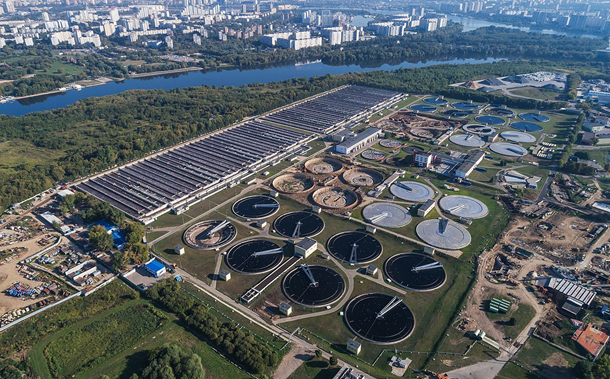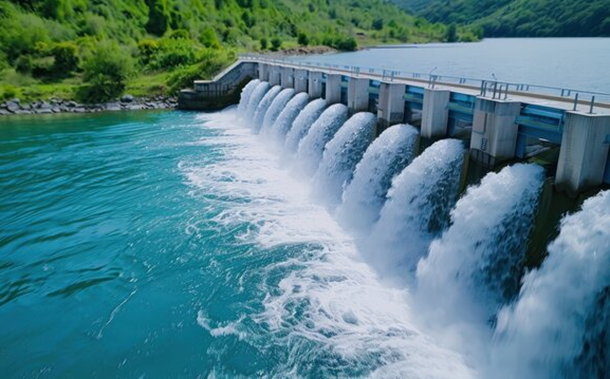Artificial Neural Network-Based Prediction of Physical and Mechanical Properties of Concrete Containing Glass Aggregates
Downloads
Doi:10.28991/CEJ-2024-010-05-018
Full Text:PDF
Downloads
[2] Kuri, J. C., Hosan, A., Shaikh, F. U. A., & Biswas, W. K. (2023). The Effect of Recycled Waste Glass as a Coarse Aggregate on the Properties of Portland Cement Concrete and Geopolymer Concrete. Buildings, 13(3), 586. doi:10.3390/buildings13030586.
[3] Gerges, N. N., Issa, C. A., Fawaz, S. A., Jabbour, J., Jreige, J., & Yacoub, A. (2018). Recycled Glass Concrete: Coarse and Fine Aggregates. European Journal of Engineering and Technology Research, 3(1), 1–9. doi:10.24018/ejeng.2018.3.1.533.
[4] Choi, S. Y., Choi, Y. S., & Yang, E. I. (2017). Effects of heavy weight waste glass recycled as fine aggregate on the mechanical properties of mortar specimens. Annals of Nuclear Energy, 99, 372–382. doi:10.1016/j.anucene.2016.09.035.
[5] Tamanna, N., Tuladhar, R., & Sivakugan, N. (2020). Performance of recycled waste glass sand as partial replacement of sand in concrete. Construction and Building Materials, 239. doi:10.1016/j.conbuildmat.2019.117804.
[6] Parghi, A., & Shahria Alam, M. (2016). Physical and mechanical properties of cementitious composites containing recycled glass powder (RGP) and styrene butadiene rubber (SBR). Construction and Building Materials, 104, 34–43. doi:10.1016/j.conbuildmat.2015.12.006.
[7] Balan, L. A., Anupam, B. R., & Sharma, S. (2021). Thermal and mechanical performance of cool concrete pavements containing waste glass. Construction and Building Materials, 290. doi:10.1016/j.conbuildmat.2021.123238.
[8] Topçu, I. B., & Canbaz, M. (2004). Properties of concrete containing waste glass. Cement and Concrete Research, 34(2), 267–274. doi:10.1016/j.cemconres.2003.07.003.
[9] Khan, M. N. N., & Sarker, P. K. (2020). Effect of waste glass fine aggregate on the strength, durability and high temperature resistance of alkali-activated fly ash and GGBFS blended mortar. Construction and Building Materials, 263. doi:10.1016/j.conbuildmat.2020.120177.
[10] Du, H., & Tan, K. H. (2014). Concrete with recycled glass as fine aggregates. ACI Materials Journal, 111(1), 47–57. doi:10.14359/51686446.
[11] Olofinnade, O. M., Ndambuki, J. M., Ede, A. N., & Olukanni, D. O. (2016). Effect of substitution of crushed waste glass as partial replacement for natural fine and coarse aggregate in concrete. Materials Science Forum, 866, 58–62. doi:10.4028/www.scientific.net/MSF.866.58.
[12] Tamanna, N. (2020). Use of waste glass as aggregate and cement replacement in concrete. Ph.D. Thesis, James Cook University, Townsville City, Australia.
[13] Elavarasan, D., & Dhanalakshmi, G. (2016). Experimental Study on Waste Glass as a Partial Replacing Material in Concrete for Fine Aggregate. International Journal of Advanced Research in Biology Engineering Science and Technology, 2(3), 116–120.
[14] Hasan, N. M. S., Shaurdho, N. M. N., Sobuz, M. H. R., Meraz, M. M., Islam, M. S., & Miah, M. J. (2023). Utilization of Waste Glass Cullet as Partial Substitutions of Coarse Aggregate to Produce Eco-Friendly Concrete: Role of Metakaolin as Cement Replacement. Sustainability (Switzerland), 15(14), 11254. doi:10.3390/su151411254.
[15] Olofinnade, O. M., Ede, A. N., Ndambuki, J. M., Ngene, B. U., Akinwumi, I. I., & Ofuyatan, O. (2018). Strength and microstructure of eco-concrete produced using waste glass as partial and complete replacement for sand. Cogent Engineering, 5(1), 1483860. doi:10.1080/23311916.2018.1483860.
[16] Wright, J. R., Cartwright, C., Fura, D., & Rajabipour, F. (2014). Fresh and Hardened Properties of Concrete Incorporating Recycled Glass as 100% Sand Replacement. Journal of Materials in Civil Engineering, 26(10). doi:10.1061/(asce)mt.1943-5533.0000979.
[17] Vijaya, M., Reddy, S., Sumalatha, P., Madhuri, M., & Ashalatha, K. (2015). Incorporation of Waste Glass Powder as Partial Replacement of Fine Aggregate in Cement Concrete. International Journal of Scientific & Engineering Research, 6(12), 405–409.
[18] Wu, D., Mao, Z., Zhang, J., Li, S., & Ma, Q. (2023). Performance evaluation of concrete with waste glass after elevated temperatures. Construction and Building Materials, 368. doi:10.1016/j.conbuildmat.2023.130486.
[19] Li, S., Zhang, J., Du, G., Mao, Z., Ma, Q., Luo, Z., Miao, Y., & Duan, Y. (2022). Properties of concrete with waste glass after exposure to elevated temperatures. Journal of Building Engineering, 57. doi:10.1016/j.jobe.2022.104822.
[20] Terro, M. J. (2006). Properties of concrete made with recycled crushed glass at elevated temperatures. Building and Environment, 41(5), 633–639. doi:10.1016/j.buildenv.2005.02.018.
[21] Chindaprasirt, P., Lao-un, J., Zaetang, Y., Wongkvanklom, A., Phoo-ngernkham, T., Wongsa, A., & Sata, V. (2022). Thermal insulating and fire resistance performances of geopolymer mortar containing auto glass waste as fine aggregate. Journal of Building Engineering, 60. doi:10.1016/j.jobe.2022.105178.
[22] Gamil, Y. (2023). Machine learning in concrete technology: A review of current researches, trends, and applications. Frontiers in Built Environment, 9. doi:10.3389/fbuil.2023.1145591.
[23] Kim, G. (2023). New Advances in Cement and Concrete Research. Materials, 16(11), 4162. doi:10.3390/ma16114162.
[24] Dao, D. Van, Ly, H. B., Vu, H. L. T., Le, T. T., & Pham, B. T. (2020). Investigation and optimization of the C-ANN structure in predicting the compressive strength of foamed concrete. Materials, 13(5), 1072. doi:10.3390/ma13051072.
[25] Mohamed, O., Kewalramani, M., Ati, M., & Hawat, W. Al. (2021). Application of ANN for prediction of chloride penetration resistance and concrete compressive strength. Materialia, 17. doi:10.1016/j.mtla.2021.101123.
[26] Yasin, A. A., Awwad, M. T., Malkawi, A. B., Maraqa, F. R., & Alomari, J. A. (2023). Optimization of Tuff Stones Content in Lightweight Concrete Using Artificial Neural Networks. Civil Engineering Journal (Iran), 9(11), 2823–2833. doi:10.28991/CEJ-2023-09-11-013.
[27] Fan, D., Yu, R., Fu, S., Yue, L., Wu, C., Shui, Z., ... & Jiang, C. (2021). Precise design and characteristics prediction of Ultra-High-Performance Concrete (UHPC) based on artificial intelligence techniques. Cement and Concrete Composites, 122, 104171. doi:10.1016/j.cemconcomp.2021.104171.
[28] Lin, C. J., & Wu, N. J. (2021). An ANN model for predicting the compressive strength of concrete. Applied Sciences (Switzerland), 11(9). doi:10.3390/app11093798.
[29] Ramzi, S., Moradi, M. J., & Hajiloo, H. (2023). The Study of the Effects of Supplementary Cementitious Materials (SCMs) on Concrete Compressive Strength at High Temperatures Using Artificial Neural Network Model. Buildings, 13(5). doi:10.3390/buildings13051337.
[30] Rahman, S. K., & Al-Ameri, R. (2021). Experimental investigation and artificial neural network-based prediction of bond strength in self-compacting geopolymer concrete reinforced with basalt FRP bars. Applied Sciences (Switzerland), 11(11), 4889. doi:10.3390/app11114889.
[31] Yasin, A. A. (2024). Prediction of the Dynamic Properties of Concrete Using Artificial Neural Networks. Civil Engineering Journal (Iran), 10(1), 249–264. doi:10.28991/CEJ-2024-010-01-016.
[32] Kazemi, R. (2023). Artificial intelligence techniques in advanced concrete technology: A comprehensive survey on 10 years research trend. Engineering Reports, 5(9). doi:10.1002/eng2.12676.
[33] Saand, A., Keerio, M. A., Juj, R., Khoso, S., & Bangwar, D. K. (2017). Utilization of waste glass as partial replacement of fine aggregate in concrete. Engineering Science and Technology International Research Journal, 1(1), 28-32.
[34] Drzymala, T., Zegardlo, B., & Tofilo, P. (2020). Properties of concrete containing recycled glass aggregates produced of exploded lighting materials. Materials, 13(1), 226. doi:10.3390/ma13010226.
[35] Ali, E. E., & Al-Tersawy, S. H. (2012). Recycled glass as a partial replacement for fine aggregate in self-compacting concrete. Construction and Building Materials, 35, 785–791. doi:10.1016/j.conbuildmat.2012.04.117.
- Authors retain all copyrights. It is noticeable that authors will not be forced to sign any copyright transfer agreements.
- This work (including HTML and PDF Files) is licensed under a Creative Commons Attribution 4.0 International License.![]()














